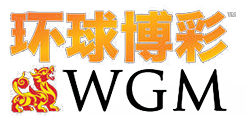This article first appeared in the Nov 2009 (pre-launch) and Jan/Feb 2010 issues of World Gaming magazine.
In this column we’ll be helping you with your Mahjong game, so you win more often. But before we move on to that, what are you actually playing when you play Mahjong?
There are millions of Mahjong players throughout the world, and the word seems to mean something different depending on where you are and who you talk to. But no matter where you are, one fact that rings true is that Mahjong is addictive, popular and has a strong hold on its own subculture wherever it is present. We’re betting that most of you have played Mahjong before whether it was at home with your grandmother, with your work buddies gambling or maybe even at a major international tournament. The Mahjong you played will be quite different to how Mahjong is played in other parts of the world.
Riichi/Reach – (136 tile deck)
Riichi (RCR in Europe) is the only rule set with a full professional circuit (that circuit is based in Japan). Riichi tournaments are held all over the world, including throughout Europe, Hong Kong, and of course, Japan. The “Riichi” side bet is the namesake and the most wellknown aspect of this game, indicating the betting player has a Ready hand. Scores are multiplied according to Base Points (fu) and Hand Points (han). There is a one Hand Point minimum to win. Players that discard others’ winners are responsible for the entire score. The game is also known for its special “dora” rule.
World Series of Mahjong (WSOM) – (136 tile deck)
The Zung Jung rule set developed by Alan Kwan. WSOM rules are a combination of the good parts of Chinese and Japanese games. They implement a scoring system based on a mathematical approach to the difficulty of each hand. Scores are added together and each player is responsible for paying a certain amount to the winner no matter how the hand was won. The World Series of Mahjong started in 2007 in Macau and plans to hold its third series in 2010.

A Mahjong session in the streets of China
Chinese Official – (144 tile deck)
The CO rules (or MCR as referred to in Europe) was developed by the State Sports Commission of China in 1998 in an attempt to merge the numerous rule sets throughout China. There are 88 hands with scores assigned to each one and the points are added together for multiple combinations. This is the main rule set for official organisations in China and the European Mahjong Association and a world championship competition is held every other year.
Hong Kong – (136 or 144 tile deck)
Most Hong Kong players require a three-han minimum. Hong Kong Mahjong is quite limited. Typically winning hands are made from “mixed one suit” (half flush) and “pure one suit” (flush) as “yaku” (valid combinations). Scores are exponential to the hand points so players are aiming for big hands in order to maximise their winnings.
Shenzhen – (136 tile deck)
This system is quickly gaining popularity in Hong Kong the south China region. It is also commonly referred to as “pung mahjong” as players are not allowed to make any “chows”. Another unique feature is that players not only score points when they complete a winning hand but also in making “quads” (kongs).
Taiwanese – (144-tile deck)
This is the only set of rules with 16 tiles in an active hand and 17 in a winning hand. This version is only prominent in Taiwan, but it’s big enough in the Mahjong community to merit major tournaments like the 2008 Mahjong Super Cup in Macau. Eight Flowers/Seasons are used and correspond to each players’ seat. There is also a variant of this 16 tile game which is very popular in Hong Kong
American – (152-tile deck)
Hands in the American game change every year and are based on a card that is distributed by the National Mahjong League, which boasts nearly 300,000 members. Each hand combination is assigned a score. Eight Jokers and eight flowers are used. American rules are famous for their Charleston at the beginning of each hand.







